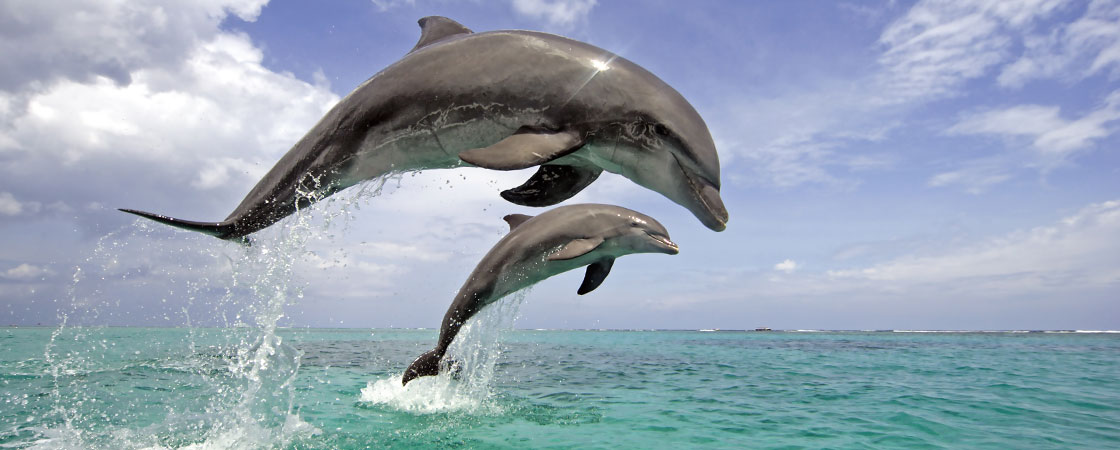Hardy Jones Productions
Hardy Jones
Hardy Jones got the call early in the morning: Two dolphins were in trouble. They’d been caught in the Caribbean Sea, near Nicaragua (nik-uh-RAH-gwuh). The men who caught them had wanted to sell them to a hotel. Hotel guests would have been able to swim with the dolphins. But the deal didn’t work out. So the men left the dolphins to die in a filthy tank.
“I was on a plane as fast as I could move,” Jones says.
The dolphins, named Nica and Blue Fields, were weak, starving, and scared. Leaders in Nicaragua had asked the World Society for the Protection of Animals (WSPA) to help. Still, no one knew whether they would live.
Two dolphins were in big trouble. Some men had caught them in the ocean near Nicaragua (nik-uh-RAH-gwuh). The men wanted to sell the dolphins to a hotel. There, guests could swim with the dolphins. But the hotel didn’t take the dolphins. So the men left the dolphins to die in a filthy tank.
The dolphins were named Nica and Blue Fields. Leaders in Nicaragua asked a group that helps animals to try to save Nica and Blue Fields. The group came up with a plan to rescue them from the tank. Then the helpers would take the dolphins on two boat rides and a helicopter trip. They would bring the dolphins back to where they had been caught.
But would the dolphins live through this?
Hardy Jones got a phone call early one day: Two dolphins were in trouble. They’d been caught in the ocean, near Nicaragua (nik-uh-RAH-gwuh). The men who caught them had wanted to sell them to a hotel. There, guests would have been able to swim with the dolphins. But the deal didn’t work out. So the men left the dolphins to die in a filthy tank.
“I was on a plane as fast as I could move,” Jones says.
The dolphins were named Nica and Blue Fields. They were weak, hungry, and scared. Leaders in Nicaragua had asked the World Society for the Protection of Animals (WSPA) to help. But no one knew whether the animals would live.
Hardy Jones got the phone call from the Nicaraguan government early in the morning: Two dolphins were in terrible trouble. The animals had been captured in the Caribbean Sea, 20 miles off the coast of Nicaragua. The men who caught them had been hoping to sell them to a resort hotel with a “swim with the dolphins” program. But the deal had fallen apart, and the men had left the dolphins to die in a filthy tank.
“I was on a plane as fast as I could move,” Jones says.
By the time Jones arrived, the two dolphins—he would soon name them Nica and Blue Fields—had been trapped for two weeks. The government of Nicaragua had called in a team from the World Society for the Protection of Animals (WSPA) to help. The dolphins were in desperate condition—weak, starving, and terrified. The scientists from WSPA worked to stabilize the dolphins, feeding them fish filled with nutrients and comforting them with caresses and gentle words.
But the situation was grim. It was clear to all that the dolphins would not survive even a few days more in the toxic pool.
The only hope was a daring mission that would put the dolphins at great risk. WSPA scientists, along with soldiers from the Nicaraguan military, would take the dolphins on an extraordinary journey by boat and helicopter back to the spot in the Caribbean Sea where they had been captured.
Jones would have a critical role on this mission: filming it. For the past 39 years, Jones has made films that show how human greed and carelessness are threatening dolphins, one of Earth’s most intelligent and sensitive creatures. Jones’s films have helped save the lives of millions of dolphins, earning him a nickname worthy of a superhero: the Dolphin Defender.
Jones’s camera was running as Nica and Blue Fields were carefully hoisted out of the water on slings. It took four men to carry each of the more than 300-pound animals to a waiting boat. The dolphins were placed on padded trays. The team slathered them with cream to protect them from the glaring sun and cooled them with seawater to prevent them from overheating.
Nica closed her eyes and seemed to surrender to her fate. Blue Fields made quiet, high-pitched whistling noises.
“He’s crying,” Jones said softly.
Nobody knew if the dolphins would survive the journey. Whatever happened to them, though, Jones would make sure that the world knew their terrible story.


